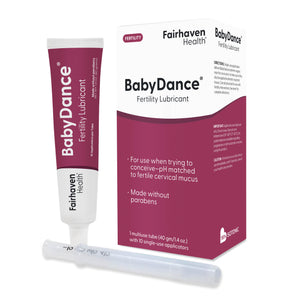Basal Body Temperature (BBT) Charting
Recording each day's body temperature and charting the pattern of temperature changes will help pinpoint when when ovulation has occurred and determine future patterns for predicting ovulation. The sudden rise in your basal thermometer reading means that you have just ovulated. Because BBT charting allows a woman to confirm that ovulation occurred, it is a very useful method in helping facilitate conception as well as understanding the general patterns and nuances of a woman's menstrual cycle. By charting, you can determine meaningful patterns that allow you to predict fertility in future cycles.
During the first two weeks of a woman's cycle, her body temperature is lower (97.0 to 97.5 F), due to the presence of estrogen. With ovulation, a rise in body temperature takes place - caused by an increase of the hormone progesterone - in order to provide a warmer, more fertile environment. A minimum temperature rise of 0.4 to 0.6 degrees F can be measured - and this change will last through the duration of the menstrual cycle. By monitoring when this temperature change takes place, you can estimate when ovulation has taken place. This digital basal thermometer is specifically designed for BBT charting.
How to take your Basal Body Temperature
Your Basal Body Temperature can be taken orally with a special BBT thermometer. Ideally, a larger thermometer that registers from 96 to 100 degrees (in easy-to-read one-tenth degree increments) is recommended. Digital thermometers are also available. Remember, you are attempting to discern as little as a two-tenths of a degree of difference in temperature, so selecting a quality thermometer and following directions are crucial.
Your BBT temperature refers to a 'resting' or 'base' temperature. That means that your BBT must be measured prior to any physical activity, after at least three to four hours of sleep. Make sure that you read thermometer directions.
1. Taking Your BBT Temperature
Take your BBT temperature first thing each morning - as soon as you wake up. You must remain in bed (as physical activity can increase your temperature) and avoid eating or drinking or even moving. Either insert the thermometer in your mouth - or alternatively your rectum - and wait five minutes. Read the temperature to within 1/10 of a degree and record the reading.
2. Charting Your BBT Temperature
Starting on day one of your menstrual cycle - the first day of your period - begin recording your BBT temperature using a calendar or notebook and graph paper. Each morning, record your temperature. Plot each day's BBT on the graph. Your temperature rise may be sudden, gradual, or in steps. The pattern may vary from cycle to cycle.
3. Predicting Ovulation
For most women, 96 to 98 degrees is considered normal prior to ovulation and 97 to 99 degrees after ovulation. By charting the differences - in one-tenth degree increments - you can determine when ovulation has taken place. Typically a rise of at least 0.4 to 0.6 degrees will take place at ovulation, though for different women the temperature increases may be sudden or gradual. Over time, charting your BBT will help you predict ovulation. For a 5-7 day advanced notice of ovulation, consider using an electrolyte-based fertility tracker.
Fertility Charting allows you chart and predict ovulation based on calendar patterns, cervical mucus analysis, and changes in your body temperature - or Basal Body Temperature charting. We recommend that you chart your basal body temperature fluctuations using the free online tool at OvaGraph.




